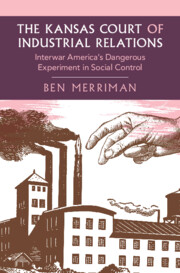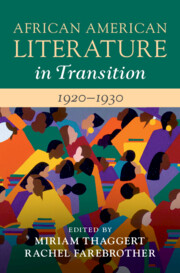Refine search
Actions for selected content:
12 results
Introduction - The Harlem Renaissance Weekly
-
- Book:
- The Harlem Renaissance Weekly
- Published online:
- 19 November 2025
- Print publication:
- 20 November 2025, pp 1-36
-
- Chapter
- Export citation
1 - The Court That Failed
-
- Book:
- The Kansas Court of Industrial Relations
- Published online:
- 26 July 2025
- Print publication:
- 14 August 2025, pp 1-32
-
- Chapter
-
- You have access
- HTML
- Export citation
4 - The Lost Legal Promise and Political Failings of the KCIR
- from Part I - The KCIR in Kansas
-
- Book:
- The Kansas Court of Industrial Relations
- Published online:
- 26 July 2025
- Print publication:
- 14 August 2025, pp 88-118
-
- Chapter
- Export citation
5 - The KCIR in National Public Life
- from Part II - The KCIR in the World
-
- Book:
- The Kansas Court of Industrial Relations
- Published online:
- 26 July 2025
- Print publication:
- 14 August 2025, pp 121-146
-
- Chapter
- Export citation

The Kansas Court of Industrial Relations
- Interwar America's Dangerous Experiment in Social Control
-
- Published online:
- 26 July 2025
- Print publication:
- 14 August 2025
4 - Social Justice through Taxation?
-
-
- Book:
- Social Justice in Twentieth-Century Europe
- Published online:
- 29 February 2024
- Print publication:
- 07 March 2024, pp 78-95
-
- Chapter
- Export citation

The Taft Court
- Making Law for a Divided Nation, 1921–1930
-
- Published online:
- 19 October 2023
- Print publication:
- 09 November 2023
1 - Disrupted Communities?
-
- Book:
- Between Community and Collaboration
- Published online:
- 15 September 2022
- Print publication:
- 22 September 2022, pp 21-55
-
- Chapter
- Export citation
Introduction
-
- Book:
- Between Community and Collaboration
- Published online:
- 15 September 2022
- Print publication:
- 22 September 2022, pp 1-20
-
- Chapter
- Export citation
Popular Mexican Masculinity and American Culture in the 1920s: Migrants and Fifís
- Part of
-
- Journal:
- Latin American Research Review / Volume 57 / Issue 2 / June 2022
- Published online by Cambridge University Press:
- 09 June 2022, pp. 422-439
-
- Article
-
- You have access
- Open access
- HTML
- Export citation

African American Literature in Transition, 1920–1930
-
- Published online:
- 17 March 2022
- Print publication:
- 07 April 2022
2 - Britain’s Biggest Blunder, 1914–1931
-
- Book:
- Monetary War and Peace
- Published online:
- 24 February 2021
- Print publication:
- 11 March 2021, pp 28-50
-
- Chapter
- Export citation
